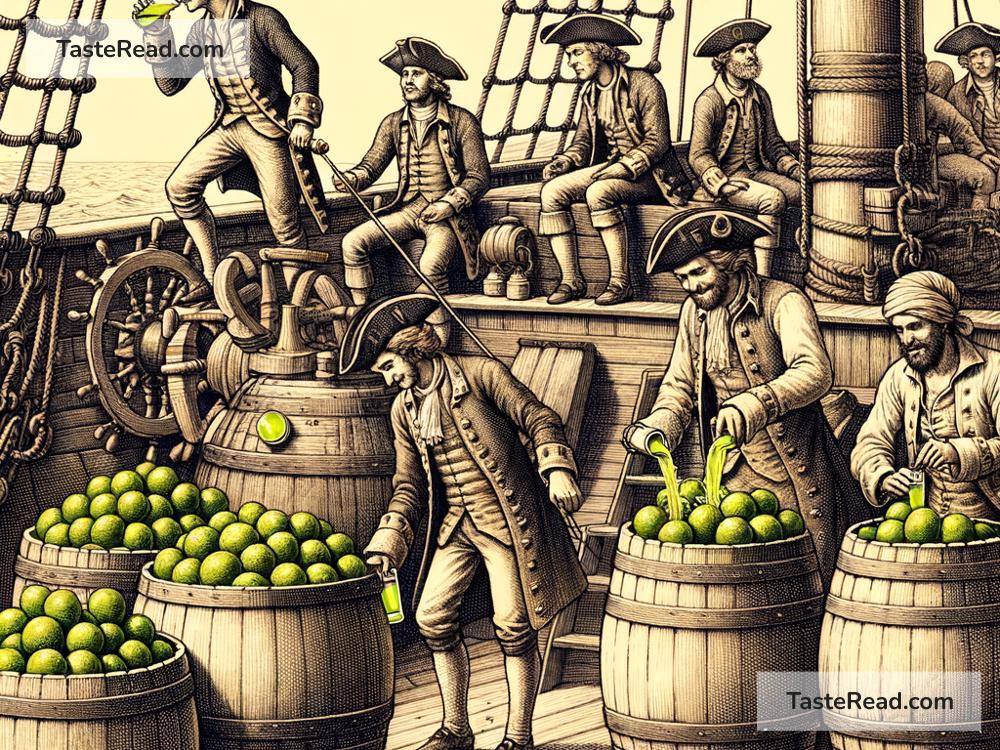The Fascinating History of Limes and Scurvy Prevention
Today, limes are often seen as a refreshing fruit used in drinks, desserts, and recipes. But did you know that limes played a key role in saving the lives of sailors hundreds of years ago? The story of limes and their use in preventing scurvy is not only fascinating but also an important chapter in human history. Let’s dive into how this humble citrus fruit became a hero of the seas.
What is Scurvy?
Scurvy is a disease caused by a lack of vitamin C (also called ascorbic acid). Vitamin C is an essential nutrient for the body, helping with the formation of collagen, healing wounds, and maintaining healthy gums, skin, and blood vessels. Without enough vitamin C, people can suffer from symptoms like:
- Bleeding gums
- Weakness and fatigue
- Joint pain
- Swollen limbs
- Slow healing of wounds
Left untreated, scurvy can even lead to death. It was a common problem for sailors on long voyages in the 17th and 18th centuries, as fresh fruits and vegetables were scarce during months-long journeys. Their diets consisted mostly of dried or salted foods, which provided no vitamin C.
The Scourge of the Seas
In the Age of Exploration (roughly between the 15th and 18th centuries), European sailors set out on long expeditions to discover new lands and trade routes. These voyages were treacherous, not just because of storms and dangerous waters, but because of scurvy.
Scurvy was so widespread among sailors that it became known as the “scourge of the seas.” Some ships lost nearly half of their crew to scurvy during long trips. It wasn’t clear at first what caused scurvy, and many believed it was an infectious disease or a punishment for poor hygiene or lifestyle choices.
The Breakthrough by Dr. James Lind
The battle against scurvy began to shift in 1747, thanks to a Scottish doctor named James Lind. He wanted to find out why sailors were getting sick and how to cure it. Lind conducted one of the first-ever clinical trials aboard a British ship.
He tested different treatments for sailors suffering from scurvy, dividing them into groups and giving each group a different remedy. Some sailors were given seawater, others were treated with vinegar, and a lucky few were given citrus fruits like oranges and lemons.
The results were clear: the group that ate citrus fruits recovered quickly, while the others remained sick or got worse. Lind concluded that something in citrus fruits could prevent or cure scurvy—but he didn’t know that it was vitamin C.
How Did Limes Get Involved?
You might wonder: why didn’t sailors eat oranges or lemons instead of limes? Lemons were initially used after Lind’s discovery, but in the early 19th century, the British Navy began using limes. Here’s why:
- Limes were more readily available in British colonies, especially in the West Indies (modern-day Caribbean).
- Limes were cheaper to produce and transport compared to lemons.
- The British believed the benefits of limes were the same as those of lemons.
Sailors mixed lime juice with rum or water to make it more palatable, and this routine became popular across the British Navy. This practice earned British sailors the nickname “limeys,” a term still used today.
However, there was a catch—lime juice used aboard ships was often diluted or processed, which reduced its vitamin C content. While limes helped prevent outbreaks of scurvy to some extent, they weren’t as effective as fresh lemons or oranges.
Vitamin C and Modern Science
It wasn’t until the 20th century that scientists discovered vitamin C and its crucial role in human health. Researchers pinpointed ascorbic acid as the key nutrient that prevents scurvy. This breakthrough confirmed what James Lind had suspected two centuries earlier: citrus fruits (and other foods like bell peppers and strawberries) are packed with vitamin C.
Though scurvy is now rare in the modern world, it remains a concern in places where access to fresh fruits and vegetables is limited, or for people with very restricted diets. Thankfully, most people today get enough vitamin C from their diets or supplements.
The Legacy of Limes in History
The history of limes in fighting scurvy is an inspiring reminder of how simple discoveries can save lives. The story of James Lind’s experiments and the widespread use of limes among sailors paved the way for better understanding of nutrition and vitamins.
Today, limes may not carry the same life-saving reputation as they did in the past, but they remain celebrated for their delicious flavor and health benefits. So the next time you enjoy a lime in your drink or meal, take a moment to appreciate its fascinating history as a hero fruit of the seas.
Final Thoughts
The battle against scurvy has taught us the importance of eating fresh, nutritious foods and understanding vitamins. A small green lime may seem ordinary, but its role in history is extraordinary. From curing sick sailors to spreading awareness about the value of citrus fruits, limes have made an unforgettable impact on the world.
Who knew the cure to scurvy was hiding in a tree all along?


